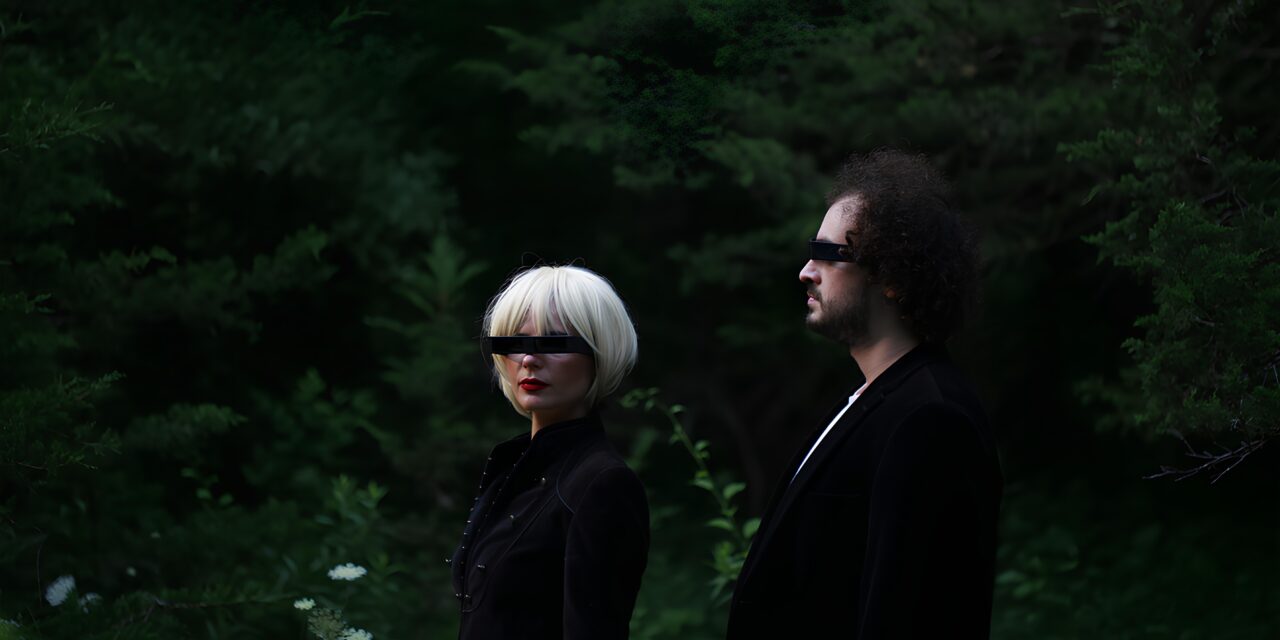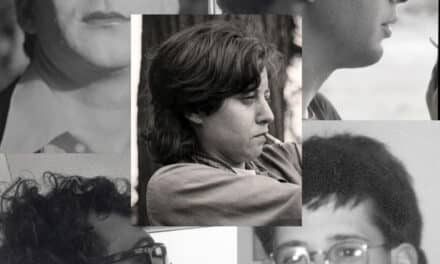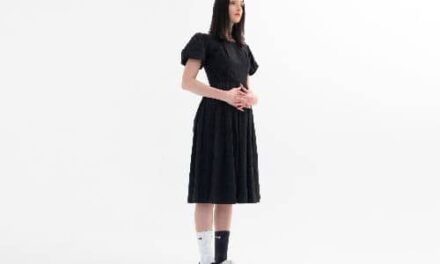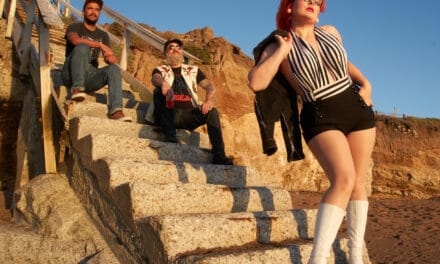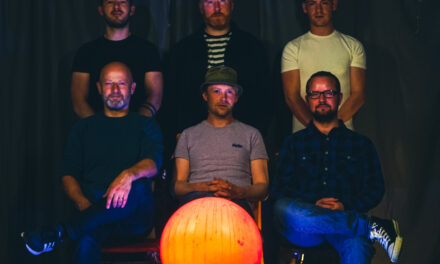Brooklyn’s music underground just got a new pulse. Enter SORRYNOTSORRY, the psychedelic rock duo born from the instant alchemy between Venezuelan multi-instrumentalists Samantha Dagnino and Andrés Cottin. What began as a casual studio session in Long Island City quickly transformed into something far more magnetic—a project that feels less like a band and more like a manifesto for sonic freedom.
After nearly a decade away from music, Sam returned to her first love with a renewed hunger, and in Andrés she found the perfect creative conspirator. Together, they’ve crafted a sound that refuses to play by the rules: fuzzy guitar riffs bleeding into ambient textures, hypnotic vocals circling like mantras, and a spirit of play that runs deeper than genre. Their upcoming self-produced debut, The Other Side, channels Radiohead’s introspection, Khruangbin’s groove, and Tame Impala’s kaleidoscopic swirl while carving out a world uniquely their own.
SORRYNOTSORRY isn’t just revisiting psychedelia—it’s reshaping it into something nostalgic, experimental, and emotionally raw.
We caught up with SORRYNOTSORRY—the Brooklyn-based duo turning vulnerability and experimentation into a bold new chapter of modern psychedelia. With their debut The Other Side on the horizon, Samantha and Andrés talk creative chemistry, sonic freedom, and why letting the music “find them” has been their guiding principle from day one.
“Disappear” feels like it was born from a very raw and unfiltered moment—what was happening inside of you emotionally the night you recorded those vocals?
Samantha: I’d been on a self-destructive spiral for some time, and I think that by making “Disappear,” I was finally able to understand what was happening to me, and that’s all audible on that vocal take. It’s the most broken I’ve ever been. It was very painful realizing that I wasn’t loved by the guy I was dating. Today, I can see that we were not a good match, but at that moment, I felt like I was drowning. The vocals were supposed to be a reference, but I realized I was never going to be able to replicate that specific moment in time. So I left them as they were, sniffles and all.
Your guitar work on the track moves from fragile to explosive—almost like grief itself. How did you approach shaping that sonic arc?
Andres: When I first approached the song, Samantha had already recorded a reference guitar, along with the final vocals. This is the opposite of how I make songs. Usually, I lay down instruments first and then record vocals, but by doing it backwards, it actually made it extremely easy and intuitive for me to arrange without obstructing or distracting from the vocal line.
I arranged my guitar parts to make it feel like David Gilmour, Robert Fripp, and Brian Eno made a song with SORRYNOTSORRY. There were three distinct approaches:
On the first one, I did spacious swells to make the songs feel as if they’re pulsing in waves.
On the second one, I went for these shiny short and sugary delay sounds, which to me are like the stars in a night sky.
And lastly, one where I accentuated the heavy parts and gave it some attitude and grit.
You’ve described “Disappear” as your most intimate track yet—was there hesitation in putting something so vulnerable out into the world?
Samantha: Definitely, I wasn’t considering this song to be released at all. It was sort of a shameful thing for me. But I’m happy that I found the courage to put it out there. It sucks to be rejected and heartbroken, but it hurts a little less when you realize you’re not alone. I hope everyone who hears this song feels seen and understood.
The upcoming video with dancer Camilia Araque adds another layer of storytelling—what drew you to her movement and to working with Samantha Dagnino as director?
Andres: Being in NYC, we come across many great artists who inspire us. Camilia has been a constant presence in the scene, who wears her heart on her sleeve, whom we admire as an artist, and who believes in us as artists. This gave us the confidence that she could convey this song wonderfully.
The shoot initially took place at Camilia’s house, where we wanted her to feel truly comfortable to interpret the song without “pretending.”
The big moment of the song was planned at the Pepsi sign in Long Island City, to match the climax energy of the song in that part, but somehow it didn’t feel forced or planned, it felt like Camilia naturally arrived there to let it all out and have her moment of catharsis.
As to working with Samantha as a Director, it is a similar reason as to why, as a band, we don’t work with “external” producers; we have very specific visions for our art and a fascination with the process of shaping ideas into existence.
Personally, I don’t have a lot of video experience, but Samantha has quite the portfolio as a director, with several short films and high-profile music videos under her belt. I always trust her vision and ability to put it on the screen.
After stepping away from music for nearly a decade, what did it feel like to return and create something this visceral with Andrés?
Samantha: At first, I was embarrassed to show him the song! But I’m happy I did because he immediately connected with it. The experience was awesome because he’s a very intuitive producer, and he understood the simplicity of the song and didn’t feel the need to overpower it, and he added epic cinematic textures with the guitar that elevated the song to something memorable. The first time I heard it, I got goosebumps.
Psychedelic rock is often about expansion and atmosphere, but this song feels deeply inward too—how do you balance those dual energies in your songwriting?
Andres: Love this question.
Well, firstly, genre is not something we think about too often; it’s more something that we end up deciding later to “give context” to a piece.
The way I look at introspective songwriting is inherently expansive. There is endless expansion within ourselves; the more we look, the more it expands, and the same is true for our universe. So it ends up being the perfect metaphor for introspection.
My goal is usually to lean into the expansive metaphors, and they reveal even more about our inner worlds.
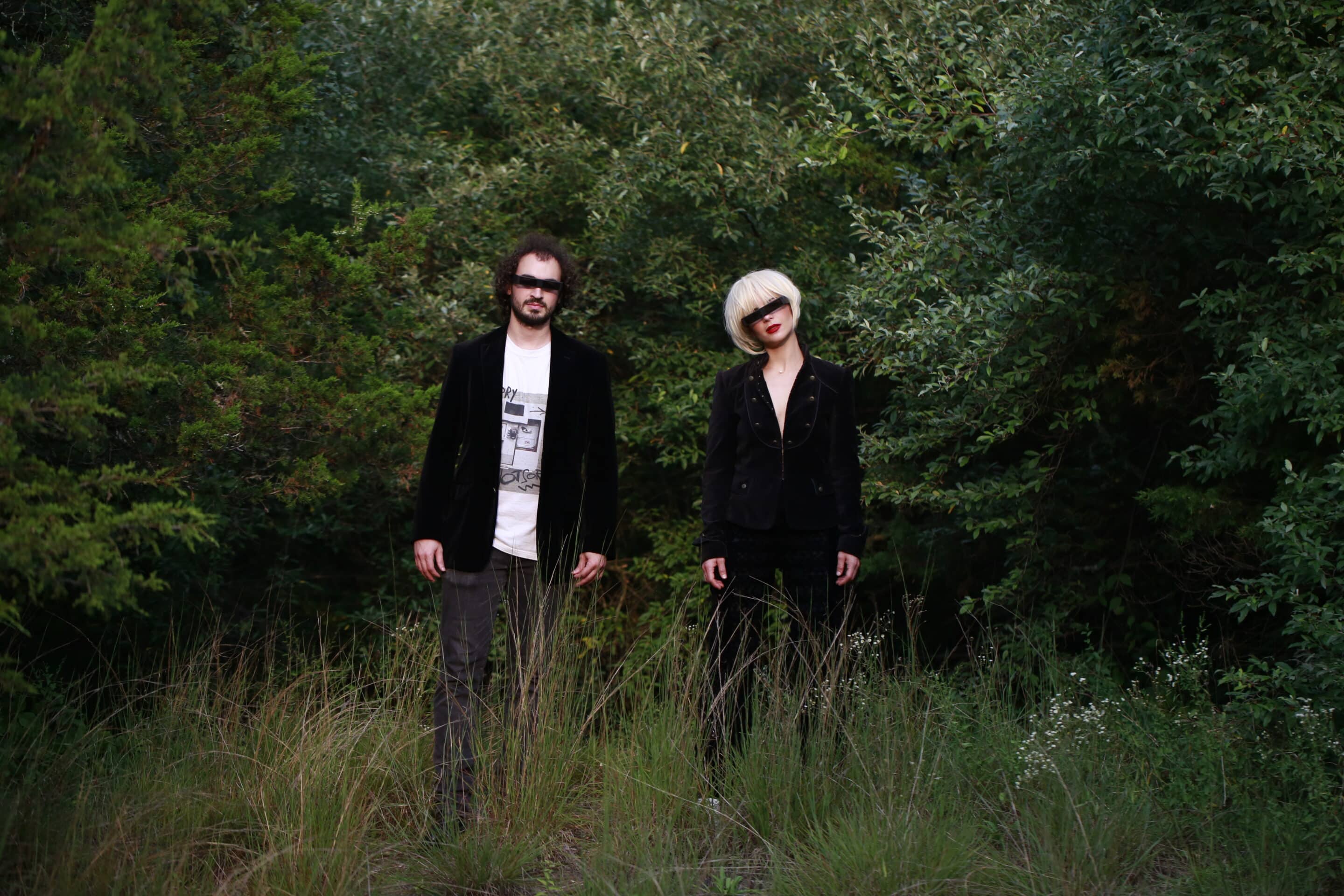
You’ve cited the importance of spontaneity in your partnership. Can you recall a moment during the making of The Other Side where improvisation completely shifted the direction of a song?
Andres: The first two songs of the album perfectly encapsulate this, and they were the first two songs we wrote together.
Samantha and I wanted to start collaborating as songwriters, so for our rehearsal, I brought a 30-second guitar and bass idea that was stuck in my head. We started playing together, and in no time Samantha had learned the bass line and was tweaking it, giving a more laid back feel, as if the song was one big build up. This paired perfectly with some lyrics I had sketched for it, “I’m planning out my great escape.”
In our next rehearsal, we were playing that same idea, but somehow we flipped it around and it became this kind of soothing psych rock groove, which inspired us to write more “inwardly expanding” lyrics, haha.
And just like that, in our first two writing sessions ever, we had the perfect intro to our album. Although we wouldn’t realize this until almost a year later, when we actually finished writing all the songs.
Heartbreak can either close someone off or crack them open creatively—how has it shaped your artistry in this album cycle?
Samantha: That’s very true.
I feel like in the beginning of my career, I was very vulnerable, and then heartbreak closed me off, and I would avoid writing about love because I didn’t want to be vulnerable in any way.
My songs were usually about sex, haha. I felt safe under that mask, and I even created a whole new persona called “Samsara.” I thought that’s what people wanted me to be. SORRYNOTSORRY is different, like the name, it doesn’t care what people think.
Our music is all about getting out of the comfort zone, in terms of lyrics, genres, and composition style, and sharing with people songs and albums that represent us honestly.
Andres: In my experience, heartbreak always cracks me open. There’s always something that wants to come out and be said, something that cannot go unsaid. For this album cycle, Samantha was an amazing, supportive friend to me in a rough time (I wouldn’t call it heartbreak, but just life), and together we started discovering love like I had not experienced before.
You’ve blended elements of trip hop, indie rock, and electronic across your sound. Where do you see “Disappear” sitting within that larger genre-fluid landscape?
Andres: I hope this song is perceived as a more avant-garde composition, but with an incredibly relatable story and theme. Maybe closer to indie rock.
Looking ahead to The Other Side, what emotional or sonic territory are you most excited—or maybe nervous—for listeners to experience?
Andres: We are incredibly excited about the release. We think people will love it and that it will bring positivity to people’s lives. Personally, I’m excited for people to listen to the sequence of songs and the way they take on a different meaning when all the lyrics are experienced as a whole. I think people will really appreciate how sonically faithful we were with our references, even though not fully planned, we have felt the influence of our favorite artist come out in our choices. Samantha: The Other Side is a journey of life through sound, a collection of special moments in the shape of songs, and it’s also the first album Andres and I composed together. That’s what I’m most excited to share. I feel like our composition styles blend really well together, and the listeners are going to enjoy this down-tempo, mystical, and hopeful piece.

